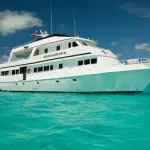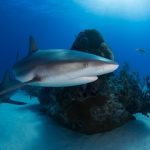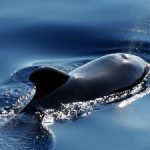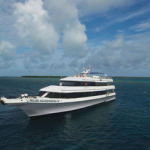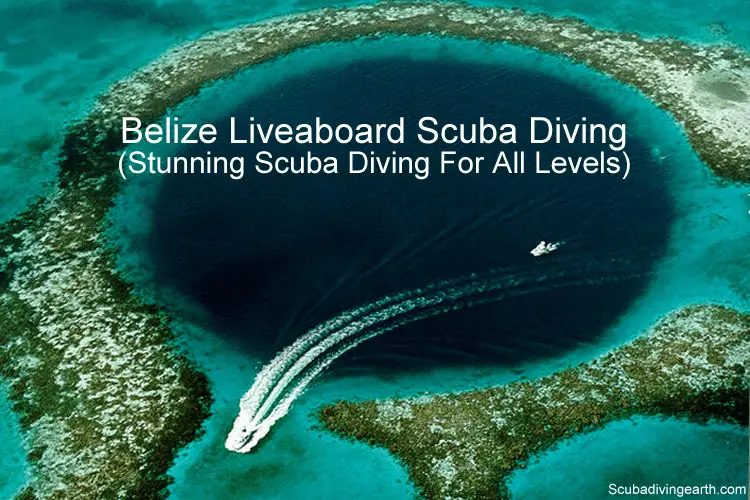
Belize liveaboard scuba diving provides the opportunity to dive some of the most beautiful underwater dives there are
Belize is a stunning paradise both on land and in the Caribbean seas around its coast. What better way to see the beautiful underwater world than on a Belize livaboard dive boat. In the Caribbean, Belize is classified as one of the regions best scuba diving destinations. Belize is home to the third largest barrier reef in the world after Australia’s Great Barrier Reef and the New Caledonian barrier reef.
Belize liveaboard scuba diving is the best way to dive the sea in this region. As shore diving is almost unheard of due to the barrier reef that fringes the coastline.
The best way to dive Belize is by a scuba diving liveaboard. You can check the latest and best deals on Belize liveaboards using the following window:
Belize liveaboard diving means you will experience:
- The Great Blue Hole which according to the Discovery Channel is the No. 1 of the 10 Most Amazing Places on Earth.
- Sharks include whale sharks, hammerheads, reef sharks, lemon sharks and bull sharks.
- The chance to experience manatees
- Dive in crystal clear warm Caribbean waters.
Where is Belize situated in the world?
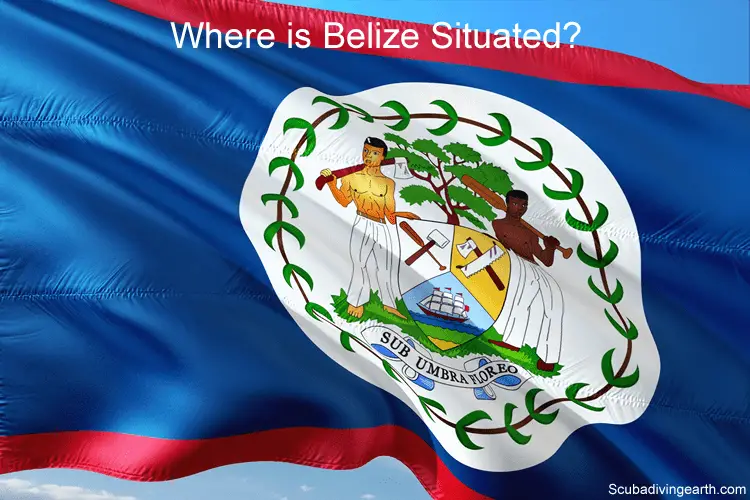
Belize is on the eastern Caribbean mainland coast of Central America. Formerly known as British Honduras. Belize became an independent Commonwealth realm in September 1981.
Bordered in the north by Mexico and to the south is Guatemala. Belize is known for its extensive barrier reef and coral reefs.
The barrier reef in Belize starts at Quintana Roo, Mexico in the north and ends on the border with Puerto Barrios Guatemala, around 190 miles (300 KM) later. The barrier reef forms part of the larger 560 mile (900 km) long coral reef system, the Mesoamerican Barrier Reef System.
Belize still has a small number of British Troops of around 1,500. The troops are there to deter Guatemala from seizing control over their dispute of this territory. Guatemala have always insisted that Belize belongs to them. They don’t recognise the territory.
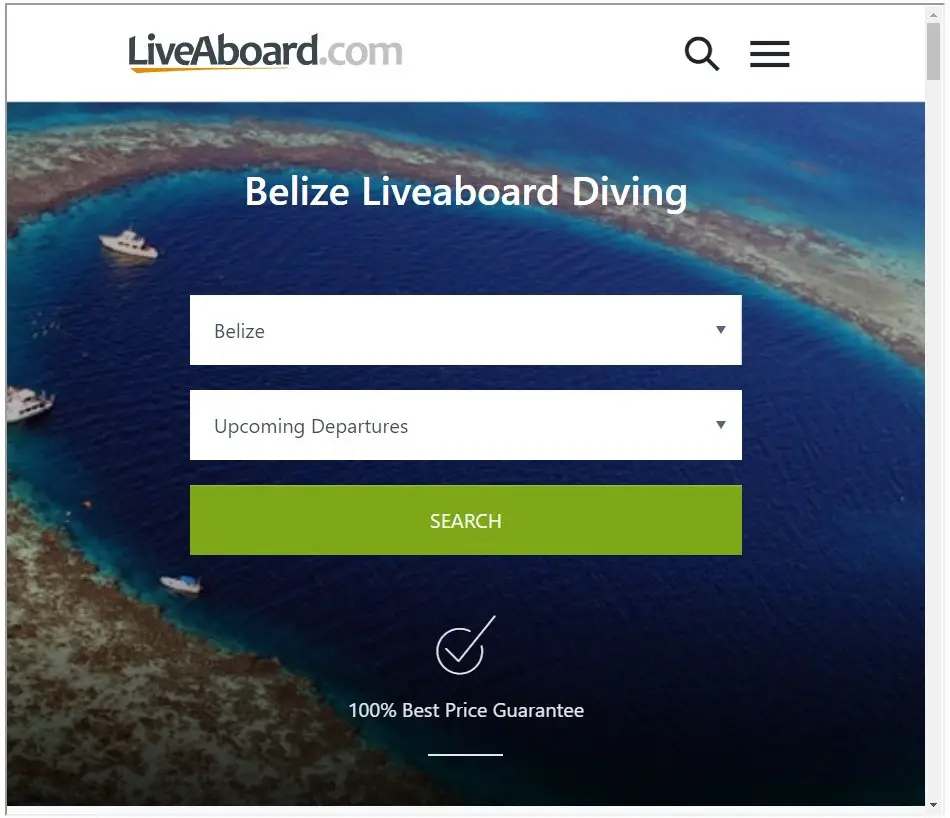
Belize liveaboard diving review
There’s a choice of two great liveaboard dive boats that run from Belize. These include the Belize Aggressor III and the Belize Aggressor IV. Let’s review these two liveaboard dive boats in turn.
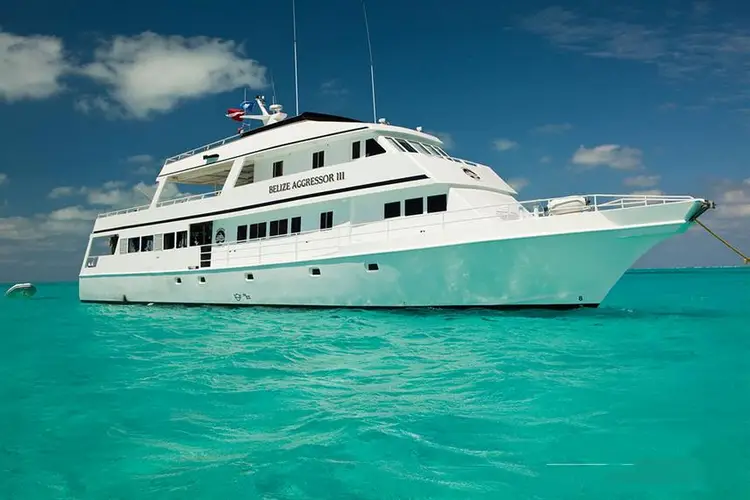
At a glance the Belize Aggressor III offers the following features:
- The Belize Aggressor III is a mono-hulled motor yacht. It is 34 metres (112 feet) in length.
- Visits Turneffe, Lighthouse atolls and The Great Blue Hole.
- Has a maximum of 18 passengers.
- Up to five dives can be done each day and all dives are done from the stern dive platform.
- On a 7-night liveaboard trip there’s a maximum of 27 dives. And on a 10 night dive trip there’s a maximum of 38 dives.
- The Belize Aggressor III includes a saloon with a full entertainment system. There’s also a hot tub Jacuzzi and wet bar on the sun deck.
- Nitrox is available on board at an extra charge.
- There’s a digital photo centre on board and there’s a 3-tier camera table with low pressure air hoses.
- Run by an SSI dive centre and the Belize Aggressor III is equipped to conduct dive courses too
- WIFI on board.
- It has en-suite cabins with their own TV and DVD players. All cabins are air conditioned.
- Each day begins with a continental breakfast, followed by a full breakfast after the first dive. Then lunch and dinner are served later in the day. But snacks are also available for those extra hungry scuba divers. Beer and wine are free of charge on board this liveaboard during meal times. At an extra charge, alcoholic drinks can be purchased outside of meals.
- Diver tracking devices are available.
- Departs on Saturdays and returns to port on Fridays, where land tours (including the Mayan ruins) are offered. The boat departs from Radisson Fort George Hotel Dock. Where the transfer to and from Belize International Airport is complimentary.
Booking your Belize liveaboard dive trip on the Aggressor III
If you book your trip on the Belize Aggressor III via Liveaboard.com. Click this link to find out more about how to book your Belize liveaboard dive trip.
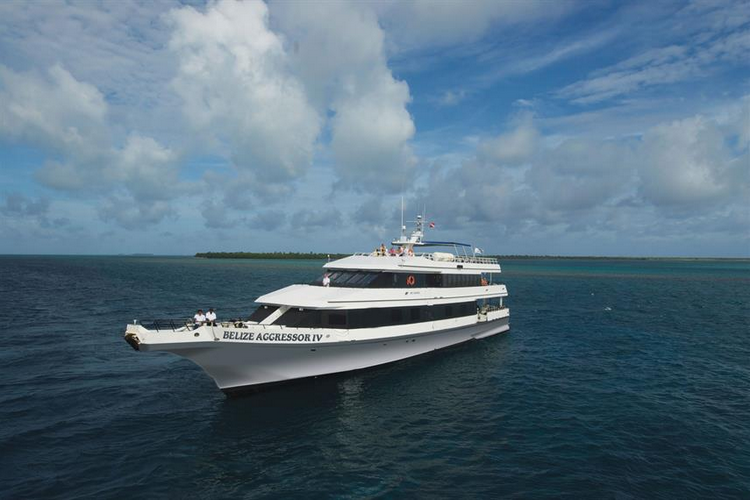
At a glance the Belize Aggressor IV offers the following features:
- The Belize Aggressor IV is a mono-hulled motor yacht. It’s 42 metres (139 feet) in length.
- Visits Turneffe, Lighthouse atolls and The Great Blue Hole.
- Has a maximum of 20 passengers.
- Up to five dives can be done each day. Most dives are done from the stern dive platform.
- On a 7-night liveaboard trip there’s a maximum of 27 dives. On a 10 night trip there’s a maximum of 38 dives.
- The Belize Aggressor IV has a 5 metre (16 feet) ‘deco-bar,’ to assist scuba divers carry out decompression safety stops.
- All divers are welcomed back onboard after a dive with hot towels and fresh orange slices.
- The Belize Aggressor IV includes a saloon with a full entertainment system, TV, DVD, music system, PC and Mac. There’s also a hot tub Jacuzzi and wet bar on the sun deck.
- Nitrox is available on board at an extra charge.
- There’s a photo centre and a camera table for the diver-photography enthusiasts.
- Run by an SSI dive centre and is equipped to conduct dive courses.
- WIFI on board.
- All cabins are en-suite with air conditioning. With their own TV and DVD players. Most have sea view windows.
- Each day begins with a continental breakfast, followed by a full breakfast after the first dive. Lunch and dinner are served later in the day. But snacks are also available for those extra hungry scuba divers. Beer and wine are free of charge meal times. At an extra charge, alcoholic drinks can be purchased outside of meals.
- Diver tracking devices are available.
- Departs on Saturdays and returns to port on Fridays, where land tours (including the Mayan ruins) are offered. The boat departs from Radisson Fort George Hotel Dock. Where the transfer to and from Belize International Airport is complimentary.
Booking your Belize liveaboard dive trip on the Aggressor IV
If you book your trip on the Belize Aggressor IV Liveaboard.com. Click this link to find out more about how to book your Belize liveaboard dive trip.
When is the best weather and time to travel to Belize for a scuba diving liveaboard trip?
The weather in Belize is warm year round. But this region does have a rainy season. There is also the risk of hurricanes in the hurricane season too, which is between June and November.
The dry season in Belize is between late November and mid-April time. With the rainy season between June and October. The highest rainfall is in the months of June, September and October, but always remember, rain in the Caribbean is warm liquid sunshine.
But the lowest rainfall is in the months of February, March and April. Although, in April as well as in May this is when Belize becomes very humid from the tropical landscape.
What are the air temperatures in Belize?
The average high air temperature in Belize doesn’t drop below 27°C (81°F). In the winter months between November and February, the average high air temperature range is between 27°C (81°F) and 29°C (84°F).
Whereas in the summer months the average high air temperature is between 31°C (87°F) and 31.7°C (89.2°F).
What are the water temperatures in Belize?
The sea directly off the coast of Belize is known as the San Pedro. Which is an area of the Caribbean sea.
The water temperatures range from a low of around 25°C (77°F) in January, February and March time, through to a high of just over 30°C (87°F) in the summer months of August, September and October. During April to June, the Belize water temperature steadily rises through 27°C (81°F) in April to the highs experienced in the summer months.
When is hurricane season in Belize?
As Belize is on the East coast of Central America and on the Caribbean sea, it is liable to be struck by hurricanes. Hurricanes in Belize are most likely to strike between the months of June to October. But some hurricanes have been known to develop in May and November across the Caribbean, but are quite rare.
Hurricane season brings its advantages in the form of less tourism in the region. You can therefore pickup a scuba diving trip much cheaper in this time. There are also less divers to contend with on dive sites too during this season.
Take out travel insurance when travelling to Belize
When you are travelling, it’s recommended to take out travel insurance. This will usually protect you in the event of holiday disruption due to a hurricane hitting the region.
Travel insurance is always recommended in any event when travelling abroad. But make sure that if you intend to scuba dive in Belize, that your insurance covers you for scuba diving. Also, check the depths of cover too. As some restrict you on the maximum depth you can dive. Which is also governed by your diver certification in any event.
Best time to scuba dive in Belize
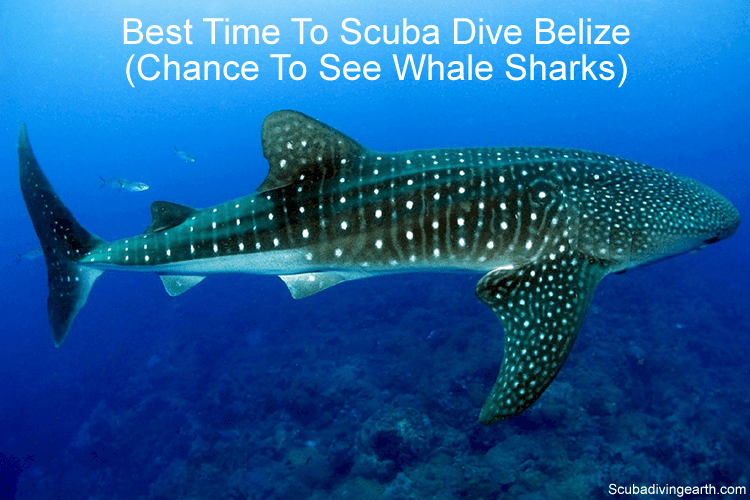
The weather is warm year-round in Belize. The seas are diveable throughout the whole year.
You can stay on the land and do a land-based diving trip to Belize. But probably the best way to see more and dive more is on a liveaboard boat trip.
Although you may wish to extend your stay to include some land-based activities to allow for a visit to Mayan ruins. Plus for a chance to experience Belize culture and food. Which of course you would be able to do do if your scuba diving holiday was land-based.
The months of April and May are the best for all round conditions for diving. Although the humid mists rolls in from the tropical areas in these months. But if you choose to scuba dive Belize on a liveaboard boat, this will not really affect your dive trip.
But this will provide the opportunity to see whale sharks, as these are in this area in April and May. And whilst water visibility is good year round, it is at its best between April and June each year.
If you prefer to dive in a quieter season, where the dive sites have less scuba divers on them, you probably want to avoid mid November through to mid April.
What to see when scuba diving in Belize
The seas around Belize are rich in sea life. The dive sites are numerous, but here’s a list of the top dive sites in Belize:
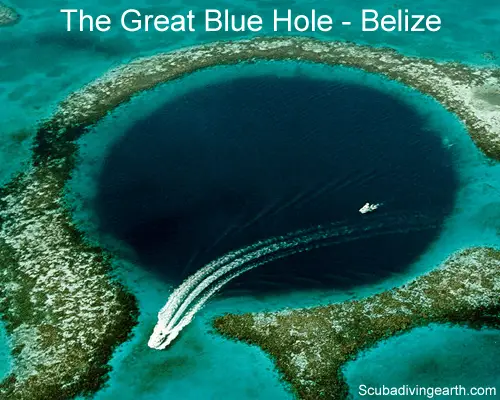
The Great Blue Hole – Belize
The famous Great Blue Hole of Belize is a sight to be seen. It is worth the trip to Belize on its own and is on many a bucket-list of scuba divers. The site is a UNESCO World Heritage Site.
The Great Blue Hole lies near the center of Lighthouse Reef. This is a small atoll and is around 62 miles (100 KM) from the mainland. The Great Blue hole and Lighthouse Reef is part of the larger barrier reef, which also forms part of the World Heritage Site too.
The Blue Hole is over 124 metres deep (406 feet) and over 300 metres (1,000 feet) wide. The hole forms an almost perfect circle and its circumference is almost 1,000 metres (3,140 feet).
This makes it the largest natural formation of its kind in the world. The depth of the water that surrounds The Great Blue Hole is at around 12 metres (40 feet). This makes it accessible to less experienced and beginner scuba divers too.
For those who are interested, the Great Blue Hole was a dry-land limestone cave some 15-20,000 years ago. But after the ice melted from the last ice age, the sea levels rose and filled this underwater hole with water.
What to expect when diving The Great Blue Hole in Belize
It has to be said that some scuba divers find the Blue Hole boring, as in the hole itself there’s little to no marine life. You’ll see from the video below that the walls are bare limestone.
The walls of the Great Blue Hole are not teaming with coral nor any sea life. Having said that, there is a large population of sharks in the area, which includes lemon sharks, black tip reef sharks, hammerheads, and bull sharks. The sharks are often there to greet dives as they emerge from their dive into The Great Blue Hole.
So if you’re not interested in the hole itself, then these sharks will be sure to entertain you. The coral garden that surrounds this enormous hole in the sea bed is littered with sea life too. This includes grouper, gobies, butterfly fish, angel fish and many Pederson’s cleaner shrimp.
Jacques Cousteau’s top 10 dive site and Discovery Channels number 1 “The 10 Most Amazing Places On Earth“
On the other hand the majority of those that visit The Great Blue Hole are amazed at its beauty. Jacques Cousteau named The Great Blue Hole as one of the world’s top ten dive sites. But then the Discovery Channel ranked it as as number one on its list of “The 10 Most Amazing Places on Earth.”
When you enter the hole, there’s a thermocline that you hit. Whilst the temperature only drops to around 24°C (75°F), because the change is so sudden, it feels much colder than that. It is therefore worth diving the hole in a 3-5mm wetsuit.
The dive site requires good buoyancy control, to avoid descending to the bottom of the hole. Inexperienced scuba divers need to be mindful of the deepness of the hole and be happy about controlling their buoyancy.
There are stalactites to see that once hung down from what was once a ceiling of air-filled caves. It is also thought that there are underground caves that link back to the mainland. But this has never been proven. These stalactites are at a depth of between 30-42 metres (100-140 feet), depending on whether you dive the south or north side of the hole.
Decide for yourself from this video on Ramon Llaneza’s dive to the bottom of The Great Blue Hole:
Revealing Underwater Domain Secrets. “Explore and see the bottom of the Great Blue Hole of Belize with Ramon F Llaneza”. A technical diver diving rebreather explore stargates the entrances to alien underworlds in Belize and Bahamas. The Mysterious Belize Great Blue Hole is a large underwater hole off the coast of Belize. It lies near the center of Lighthouse Reef, a small atoll 100 kilometers (62 mi) from the mainland and Belize City. The hole is perfectly circular in shape, over 300 meters (1000 ft) across (diameter), 3140 feet circumference and 125 meters (410 feet) deep.
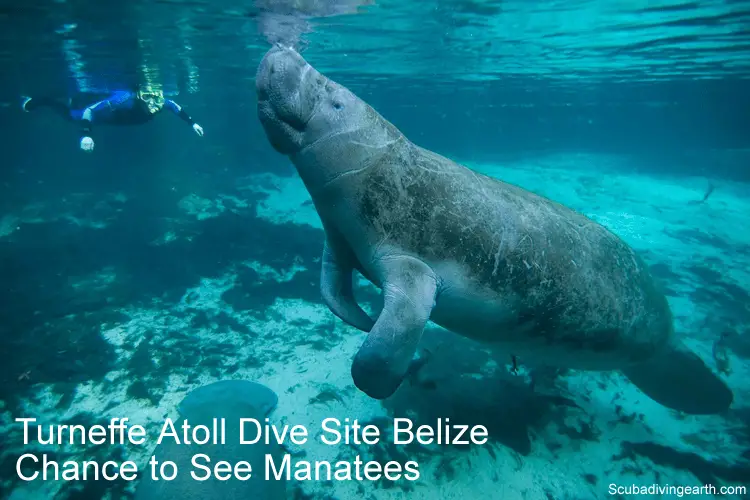
Belize Turneffe Atoll dive site
Turneffe Atoll is one of the best dive areas in Belize. This is a large offshore atoll reef.
This atoll forms one of three distinct Caribbean atolls around Belize. There are a number of dive sites to choose from around this Atoll, which can be important at certain times of the year when the winds pick up. There’s plenty to see when you’re there no matter which dive site is chosen.
The Turneffe Atoll was designated a marine reserve in 2012. Also Turneffe Island is on the route taken by all Belize liveaboard dive boats. It’s possible to stay at the Turneffe Atoll dive resorts and scuba dive from there. Or you can visit the area on route on a liveaboard dive trip.
In the months of July and August, Turneffe Island is used by Loggerhead turtles for nesting. So during this period, you’ll see many more turtles in the waters around this island. But also pilot whales and killer whales migrate past Turneffe Island from March to June each year. This would be a real treat to see.
Taken while staying at the Turneffe Island Resort. Used a GoPro Hero + LCD with red and orange filters. Music is “Pressure Off” by Duran Duran
The Belize Elbow reef dive
The Elbow is one of the best dive sites here. It is a favourite spot for fish spawning too. You may be lucky to see this in January for black groupers and in March, April and May for mutton snappers.
Belize Jo-Jo’s and Calabash Island dive
If you like to see trigger fish, then the dive at Jo-Jo’s and Calabash Island in July is a time to see them nesting. Although trigger fish become very territorial when they are nesting, and can give a nasty bite to scuba divers.
In the Turneffe Atoll area there’s a chance to see many reef sharks, nurse sharks, beautiful eagle rays, large tarpon (which can sometimes be mistaken for sharks), nurse sharks, octopus and the curious creature the toadfish (a fish species endemic to Belize). Not to mention the many coral formations and growths.
Scuba dive with Manatees in Belize
There is the possibility to see manatees in Belize. These plant eating creatures are also known as sea cows. They can weigh up to 550 kg ( 1,210lbs) and manatees have been known to grow to around 4.6 metres (15 feet) in length.
You can sometimes find manatees in the area of Turneffe Atoll. Perhaps you’ll be one of the lucky ones.
Saw a West Indian manatee during a scuba dive at Tuffy Inn off San Pedro, Belize.
I hope you enjoyed this article about Belize liveaboard scuba diving
I’d love to hear from you. Tell us about your adventures of diving and snorkeling, in the comments below. Please also share your photos. Either from your underwater cameras or videos from your waterproof Gopro’s!
If this article hasn’t answered all of your questions. If you have more questions either about snorkeling or scuba diving (or specifically about Belize liveaboard scuba diving), please comment below with your questions.
There will also be many more articles about scuba diving (and snorkeling) for you to read and learn about these fabulous sports.
Have fun and be safe!

